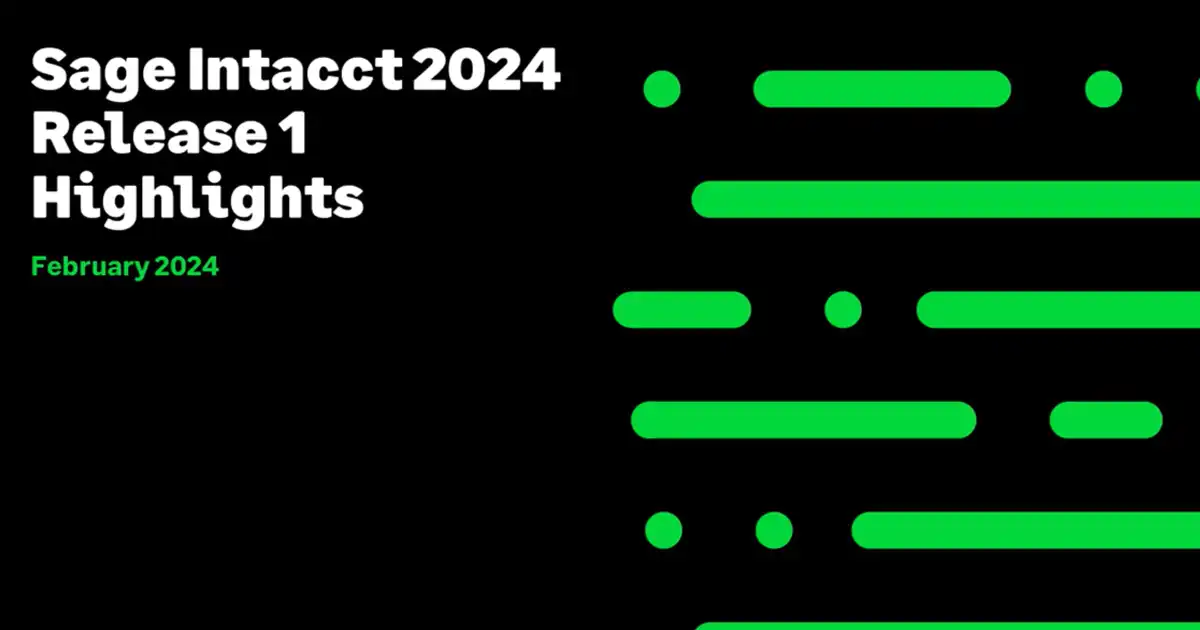Preparing for an IPO is an exciting time, but it can also be daunting for the team leading the charge. Going public is one of the most significant endeavors a company will undergo. How can you be sure your IPO is successful? The key is having the right game plan, team, and automation.
Sage Intacct provides functionalities that empower finance teams during the IPO preparation process and beyond as a public company. It helps teams streamline and automate accounting and reporting while engaging robust financial controls. Finance teams can move forward with confidence knowing Sage Intacct enables compliance with audit trails, visibility, and forecasting needed to support an IPO. Let’s go over the 5 functionalities that enable companies on Sage Intacct to go further, faster.
1. Flexible intelligent general ledger with AI and a continuous close
First, there’s the AI-powered intelligent general ledger, which allows you to close the books up to 80% faster. The intelligent general ledger transforms your business strategy and processes with continuous accounting, trust, and insights. It provides the flexibility and efficiency you need to adapt to change and growth as you prepare to go public.
You can simplify your chart of accounts, enter transactions once and report on them across multiple financial standards, define your own workflows, set guardrails for consistency and accuracy, and continuously close your books instead of saving it all for the period end. Plus, the Sage Intacct Intelligent GL is equipped with Outlier Detection for General Ledger that analyzes patterns across all entries to find anomalies and immediately highlight them for your review. It shifts your reviews from periodic time-consuming activities to a continuous, proactive experience.
You’ll have fewer corrections to make which helps to get your audits done faster and close quicker. A faster close is essential before you become a public company so you can control the complexities that come once you do go public and provide information to grow your business rather than focus on catching up. With the intelligent general ledger you’ll have the data you need when you need it to make sound strategic decisions and report across complex businesses.
2. Public market reporting such as forecasting, FP&A, and financial statements
With Sage Intacct, you have robust dashboards that contain SaaS metrics to help you guide your business in a public market. All journal entries are tagged with dimensions, so that cohort analysis against an unlimited number of dimensions allows you to do reporting on both financial and statistical accounts. You can monitor your cash balance, forecast incoming and outgoing cash, and handle budgeting and planning. Compare budget versus actuals with a click, implement rolling forecasts, and apply graphical views to understand the impact on profit and loss in what-if scenarios.
3. Foreign exchange, currency, and tax
The third functionality helps you handle international transactions with ease. Sage Intacct supports you through these complexities with multi-currency conversions and adjustments, fast and easy global consolidations, end-to-end tax compliance, electronic banking, convenient electronic payments, and flexible reporting to meet in-country requirements. Sage Intacct support over 180 currencies and have customers with operating entities in more than 120 countries. Handling international transactions is smooth, simple, and accurate with Sage Intacct automation and 24-7 transparency into your financials.
4. Consolidations
As your company grows, you may add domestic and multinational entities and companies. Sage Intacct provides automated consolidations and inter-entity transactions across multiple base currencies. Top-level dashboards give you a view of all your entities in one place, as well as a graphical rollup and KPI view. You can drill down into consolidation journals that are automatically produced, for easy audit traceability and reporting transparency. Plus, you have the flexibility to set permissions on dashboards based on users and groups. With Sage Intacct, consolidating your financials can switch from taking days to taking minutes.
5. SOX compliance
The mandated yearly Sarbanes-Oxley (SOX) compliance assessment looks at how well a company manages its internal controls and verifies company financial statements. There are two types of SOX compliance. With SOX Section 302, the robust financial reporting of Sage Intacct provides you with detailed income statements, customizable dashboards in real-time, billing schedules, revenue recognition, automatic journal entries, and much more. Rigorous financial controls help you manage risk. Controls must be tight enough to support and protect your company through more stringent audits that come as your business becomes more complex and the risks of fraud and data inaccuracy increase.
Meanwhile, SOX 404 compliance looks at your internal controls to ensure they can prevent and detect errors in your financial reporting process. Sage Intacct provides numerous internal controls to help you meet compliance confidently. These controls include checklists for workflows and timestamps for completion, an always-on audit trail, role-based access, and system security with restricted access to data.
Dozens of companies have gone public on Sage Intacct including Kayak, Marketo, GrubHub, and modern card-issuing unicorn Marqeta. The cloud financial management solution scales your financial capabilities as you grow and helps you through the rigors of the public market. Sage Intacct deep accounting capabilities ensure you are technologically ready when it is time to go public.
This post originally appeared on Sage.com



